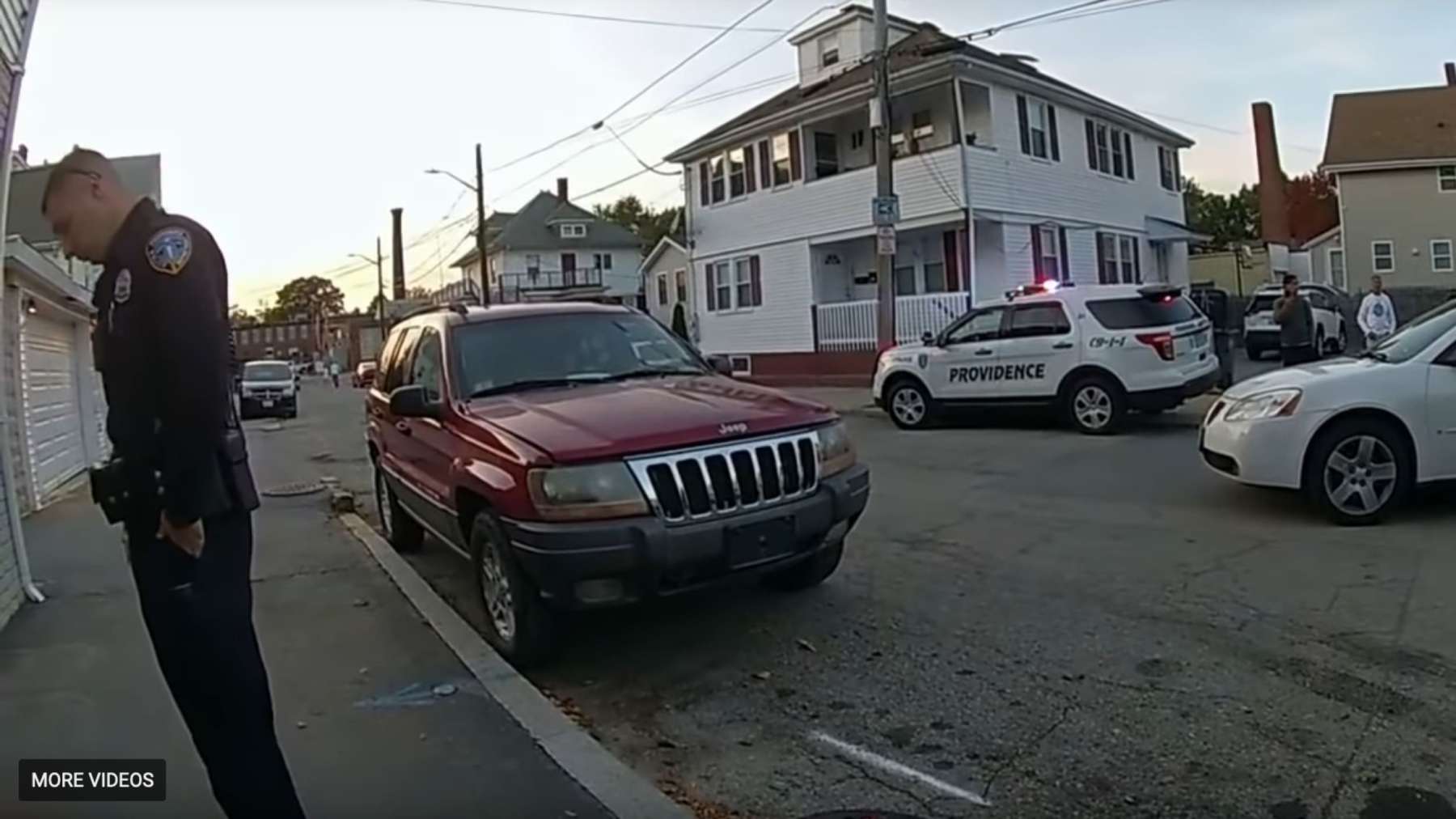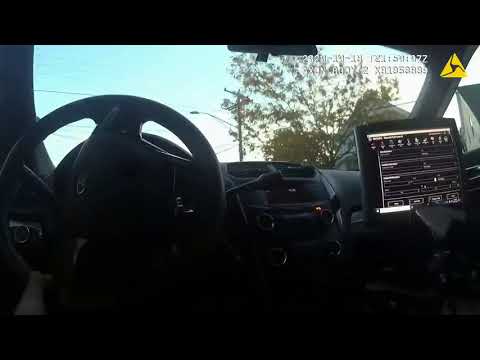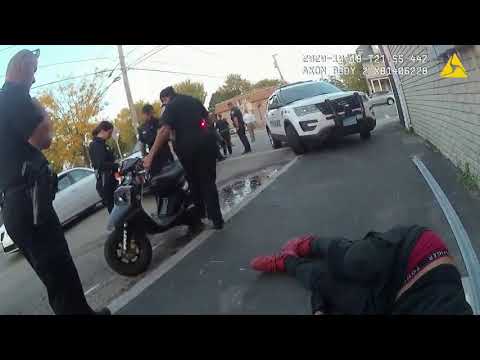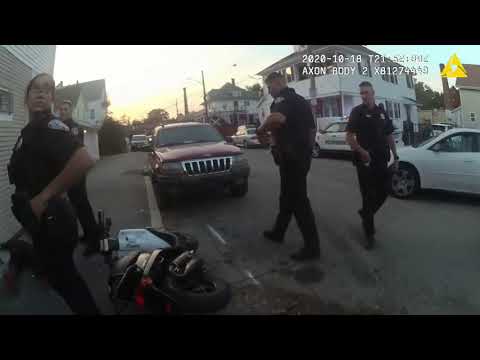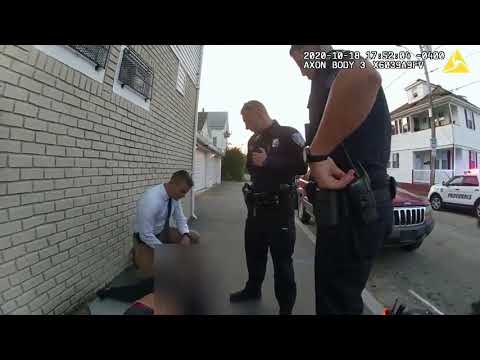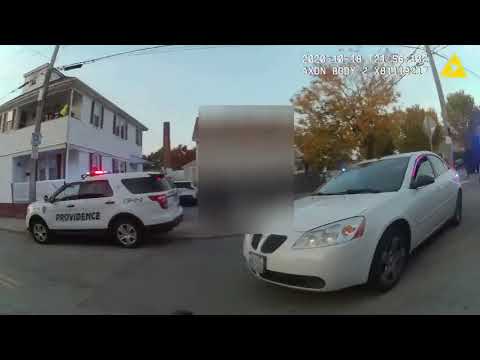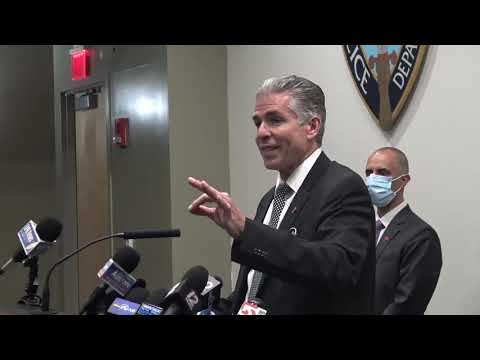Providence releases police body cam footage from Jhamal Gonsalves incident
“You guys should have respect for him,” said an on scene witness, who then clearly stated that he saw the police cruiser hit the moped “from the back.” Providence Mayor Jorge Elorza, Public Safety Commissioner Steven Paré and Police Chief Hugh Clements took questions today at the Public Safety Complex about just released police body camera footage from the incident
October 26, 2020, 2:41 pm
By Greg Brailsford
“You guys should have respect for him,” said an on scene witness, who then clearly stated that he saw the police cruiser hit the moped “from the back.”
Providence Mayor Jorge Elorza, Public Safety Commissioner Steven Paré and Police Chief Hugh Clements took questions today at the Public Safety Complex about just released police body camera footage from the incident involving Jhamal Gonsalves and his interaction with a police vehicle that left him in a coma and in Rhode Island Hospital. The footage was viewed by Gonsalves’ family the day before, writes the Providence Journal’s Brian Amaral.
Providence officials released five videos in all. The videos did not answer the key question in the case to the satisfaction of the police, that is, did the cruiser actually hit Gonsalves’ moped, causing the crash. The actions of the police during the aftermath of the incident, as captured on video, have raised many serious questions.
Here are the videos, warning some are very disturbing:
Here’s the press briefing:
Commissioner Paré began the briefing by asking members of the public who may have video or who may have witnessed the event to come forward. For the first time, Commissioner Paré said that there is a criminal aspect to the case, though what the nature of that might be is unclear. [Edit: Brian Amaral reports that Officer Kyle Endres, the driver of the police cruiser, “is the only one who’s the subject of the criminal investigation.”]
Aside from the criminal investigation, “there are also things in that video that we need to address administratively,” said Commissioner Paré, who didn’t identify what those things were, though a follow up question with Chief Clements indicated that some of it might have to do with the way a member of the public recording the incident on their cell phone was treated by officers.
At the 2:20 mark in the third video release, a person peacefully filming the scene interacts with the police officer wearing the body camera.
“I’m not saying not to record, I’m just saying have some respect for the body. That’s all I’m saying,” said the officer.
“You guys should have respect for him,” said the on scene witness, who then clearly states that he saw the police cruiser hit the moped “from the back.”
“Is that what you saw?” asks the police officer.
Moments later a second police officer tells the person recording to get on the sidewalk, pushing him from the road, which is completely blocked off by police vehicles. The person is told that if he doesn’t stay on the sidewalk he will be arrested. Moments after that a police cruiser pulls up on the sidewalk and a third police officer begins screaming at the person with the phone to get out of the way.
At all times the person with the phone complied with police directives, but was assaulted, treated with disrespect and threatened with arrest.
Asked about this, Chief Clements said the focus of the investigation is on the accident and that everything else concerning the actions of the officers on the scene will be handled internally. “If need be, will there be some sort of internal discussion with individuals on that scene?” asked Clements, “Yes.”
The video, said Commissioner Paré, speaks for itself. What he sees is Officer Endres seeing to the crash victim and other officers coming on scene rendering aid and securing the crash scene.
One of the confusing aspects of the videos provided is that officers on the scene administered Narcan to Gonsalves. (See the fourth video released at the 0:30 mark. Warning: The video is very disturbing) Narcan is the brand name of noloxone, a drug that helps save the life of someone who is overdosing on opioids. Narcan given to a person not on opioids has no ill effects. Still, one of the obvious questions is why the officers on scene thought a person who crashed into a wall was unresponsive due to possible overdose rather than due to severe head, neck and spine injuries.
In the video Jhamal can be heard having an audible seizure, and the discussion about administering Narcan was begun. Commissioner Paré said that the confusion expressed by one officer as to how to administer Narcan was due to a new kind of delivery mechanism being recently introduced that the officer was unfamiliar with. Official police policy is that every officer has been trained to administer Narcan.
Most of the videos begin with a 30 second delay between when the video starts and the audio begins. This is a function of the technology and the way it seems to buffer and store data. In all the videos Jhamal’s face is blurred out of the videos, “for his privacy and the privacy of the family.”
The confusion among the officers about the location of the incident did not impact the fire departments ability to get to the scene in a timely manner said Commissioner Paré. Some officers seemed to be confused as to what street they were on, but the correct address was given to the rescue team and the rescue team got there as fast as possible.
The most disturbing part of the initial video of the incident was shortly after Gonsalves was on the ground when a police officer tugged on Gonsalves’s arm. According to one reporter, Gonsalves’ mother said the officer pulled on his arm like he was a rag doll. Commissioner Paré confirmed that that is one of the things the investigation is looking at.
Commissioner Paré still anticipates having a preliminary accident reconstruction report within the week.
See also:
- Ride-Out organizers and fellow bikers issue statement on Jhamal Gonsalves and the police-moped impact
- PERA calls for an independent review of police-moped impact
- PVD city officials hold press conference about police cruiser-moped impact
- After peaceful Justice for Jhamal rally, protesters clash with police in Providence
- Providence releases new video in Jhamal Gonsalves investigation, comments on previous night’s protest
- Providence Human Relations Commission releases statement on police misconduct
- Police clash with protesters at PVD/Cranston border
- PERA begins review of Jhamal Gonsalves case, wants bigger role
- Police in riot gear prevent Federal Hill restaurant patrons from viewing peaceful protesters



